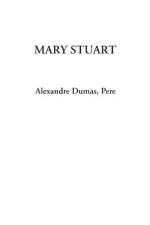Darnley, who wished to succeed at all costs, enlisted Rizzio in his interests, unconscious that he had no need of this support; and as, on her side, Mary, who had fallen in love with him at first sight, fearing some new intrigue of Elizabeth’s, hastened on this union so far as the proprieties permitted, the affair moved forward with wonderful rapidity; and in the midst of public rejoicing, with the approbation of the nobility, except for a small minority, with Murray at its head, the marriage was solemnised under the happiest auspices, 29th July 1565. Two days before, Darnley and his father, the Earl of Lennox, had received a command to return to London, and as they had not obeyed it, a week after the celebration of the marriage they learned that the Countess of Lennox, the only one of the family remaining in Elizabeth’s power, had been arrested and taken to the Tower. Thus Elizabeth, in spite of her dissimulation, yielding to that first impulse of violence that she always had such trouble to overcome, publicly displayed her resentment.
However, Elizabeth was not the woman to be satisfied with useless vengeance: she soon released the countess, and turned her eyes towards Murray, the most discontented of the nobles in opposition, who by this marriage was losing all his personal influence. It was thus easy for Elizabeth to put arms in his hand. In fact, when he had failed in his first attempt to seize Darnley, he called to his aid the Duke of Chatellerault, Glencairn, Argyll, and Rothes, and collecting what partisans they could, they openly rebelled against the queen. This was the first ostensible act of that hatred which was afterwards so fatal to Mary.
The queen, on her side, appealed to her nobles, who in response hastened to rally to her, so that in a month’s time she found herself at the head of the finest army that ever a king of Scotland had raised. Darnley assumed the command of this magnificent assembly, mounted on a superb horse, arrayed in gilded armour; and accompanied by the queen, who, in a riding habit, with pistols at her saddle-bow, wished to make the campaign with him, that she might not quit his side for a moment. Both were young, both were handsome, and they left Edinburgh amidst the cheers of the people and the army.
Murray and his accomplices did not even try to stand against them, and the campaign consisted of such rapid and complex marches and counter-marches, that this rebellion is called the Run-about Raid-that is to say, the run in every sense of the word. Murray and the rebels withdrew into England, where Elizabeth, while seeming to condemn their unlucky attempt, afforded them all the assistance they needed.
Mary returned to Edinburgh delighted at the success of her two first campaigns, not suspecting that this new good fortune was the last she would have, and that there her short-lived prosperity would cease. Indeed, she soon saw that in Darnley she had given herself not a devoted and very attentive husband, as she had believed, but an imperious and brutal master, who, no longer having any motive for concealment, showed himself to her just as he was, a man of disgraceful vices, of which drunkenness and debauchery was the least. Accordingly, serious differences were not long in springing up in this royal household.




